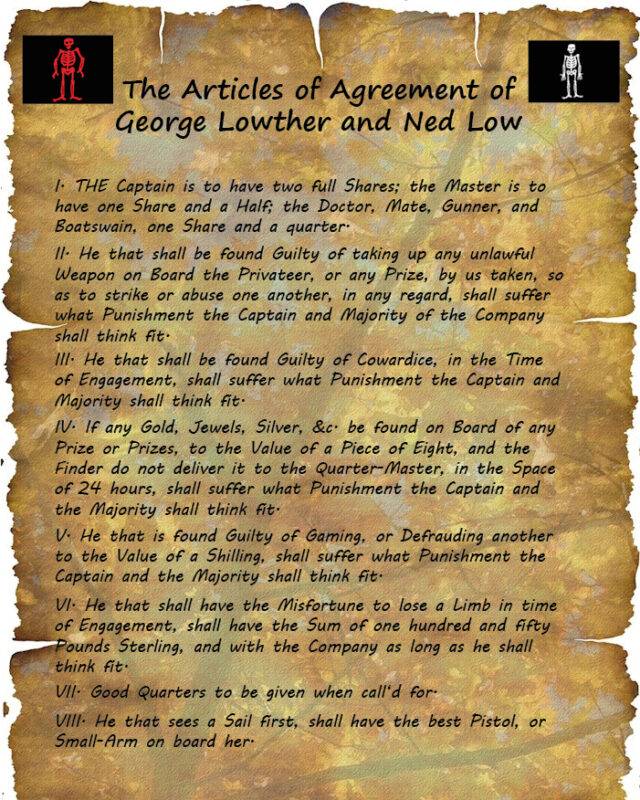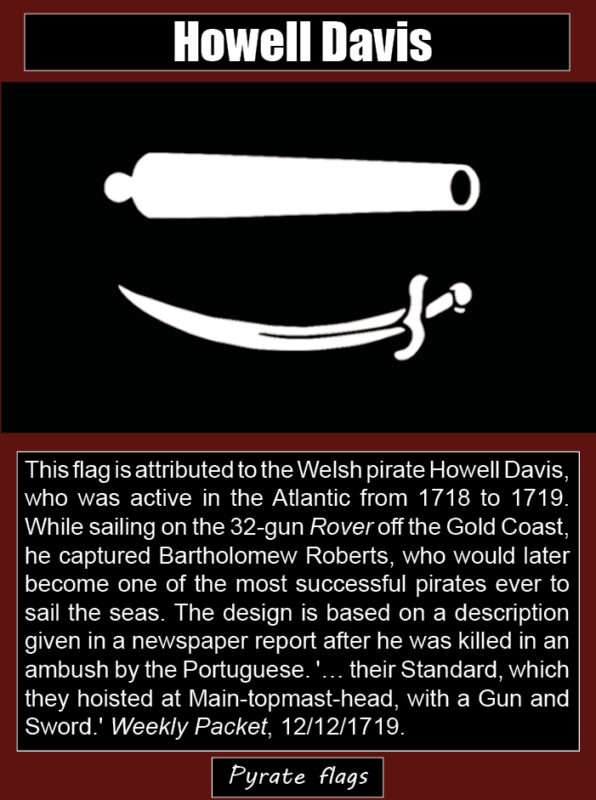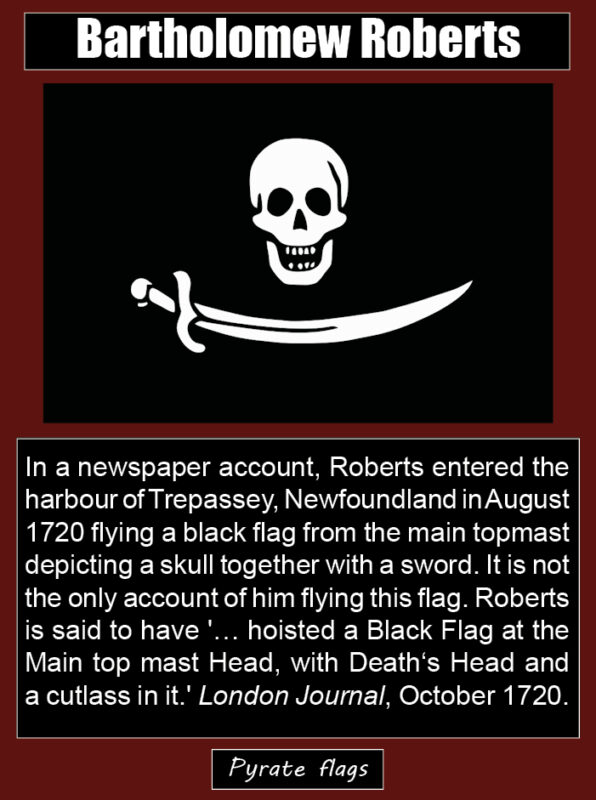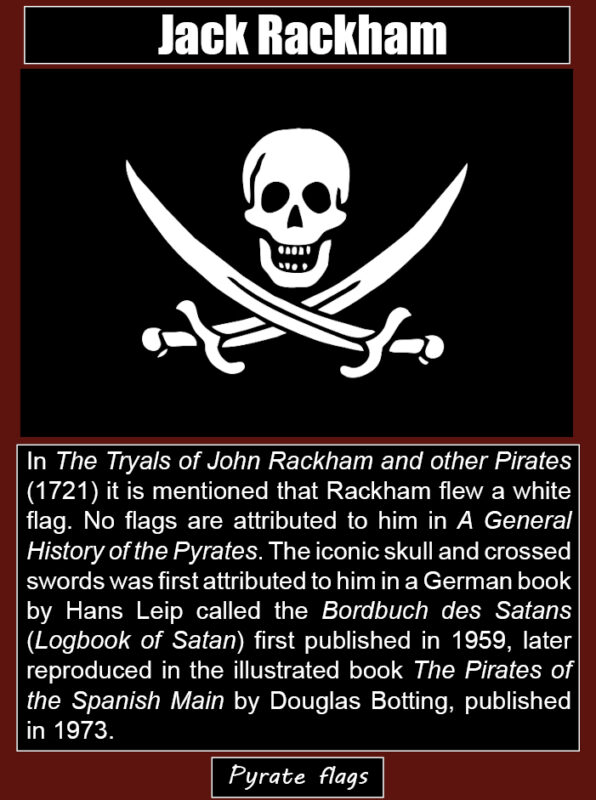
The Articles of John Phillips
These articles were written by Captain John Phillips and crew of the Revenge in 1724. The articles were recovered because the forced pirates on his crew mutinied against him and turned the loyal pirates over to the authorities along with the ship. This meant the pirate articles survived long enough to be recorded by Charles Johnson in his book A General History of the Pyrates, published in 1724. An example of strict enforcement the Articles was when a forced carpenter called Fern was killed for attempting to escape.
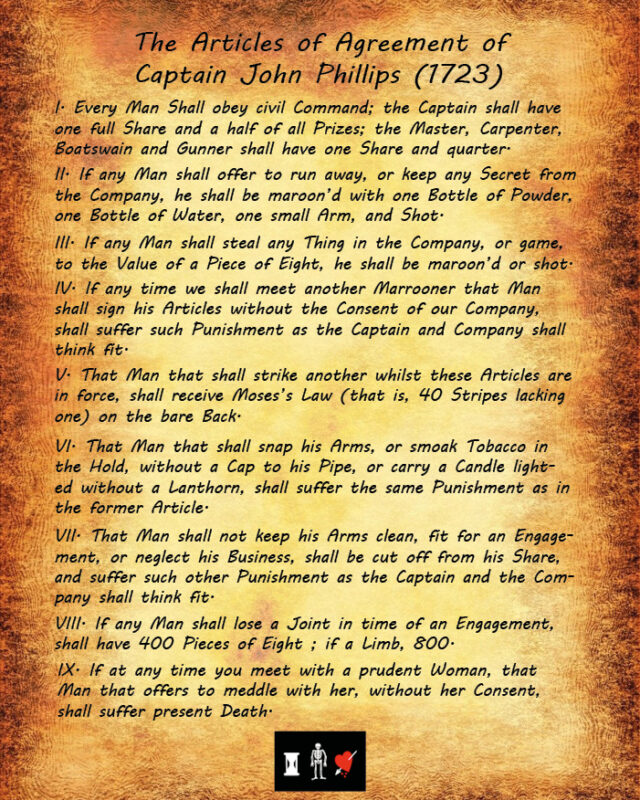
The Articles of Edward Low & George Lowther
These articles are known to have been used by Edward Low and George Lowther aboard their ship. They were first seen in the Boston News Letter, and it appears that Low and Lowther had the same articles. This is probably because they sailed together from early January to the end of May in 1722. Lowe’s articles were published in the Boston News-Letter on August 1, 1723, and also The Tryals of Thirty-Six Persons for Piracy, Twenty-Eight of them upon Full Evidence were Found Guilty and the Rest Acquitted, which was also printed in 1723. The first eight points of George Lowther’s articles were published in A General History of the Pyrates (1724).
